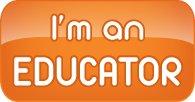Social Learning, part two: The role of the teacher/parent
In the previous post on Social Learning, I

expanded upon Sokikom’s focus on kids helping other kids learn. The next fo
cus is how the teacher should fit into the social learning paradigm.
The theory of social learning
emphasized the influence the students have upon each other, both direct and indirect. If left unsupervised, there is the potential that kids may reinforce behavior that is detrimental to learning of themselves or others. Therefore, the teacher/parent’s role is to encourage beneficial learning behavior. This means that: A.) the students are learning within a social setting, and B.) that the students are properly engaged within that social setting.
Point A, that students should learn within a social setting, can be a difficult issue to tackle. Will a group of students participate well together? Is the group too big or too small to function? What if they goof off? Even within a classroom setting, it is possible for students to isolate themselves from others. Point B, that students are actively engaged in the social environment, is perhaps an even harder issue to tackle, as telling kids where to sit is far easier than telling them to actually talk to each other.
So, I’m pointing out the difficulties, but what of solutions? The social setting established in classrooms should help improve upon what the individual students’ have already learned by allowing them to observe others who are more knowledgeable in the relevant areas.
Of course, within this social setting is the teacher. If one of the key principles of Social Learning is that students and peers can teach each other, where does the teacher fit in? Simply put, the role of the teacher within the theory of Social Learning is to promote the student to make discoveries on their own as much as possible. As self-discovery is important, students should be allowed to make mistakes, so that they can learn from them. Obviously, this shouldn’t be taken to an extreme – students still need guidance from an authoritative and more knowledgeable figure. However, promoting a social environment that promotes learning from peers, as well encouraging students to make discoveries and understandings on their own helps students to truly internalize the knowledge and skills they acquire.
Some additional links on social learning:
Concept to Classroom: Constructivism
Funderstanding: Observational Learning
Image by Woodley Wonder Works
Jon Hwang



